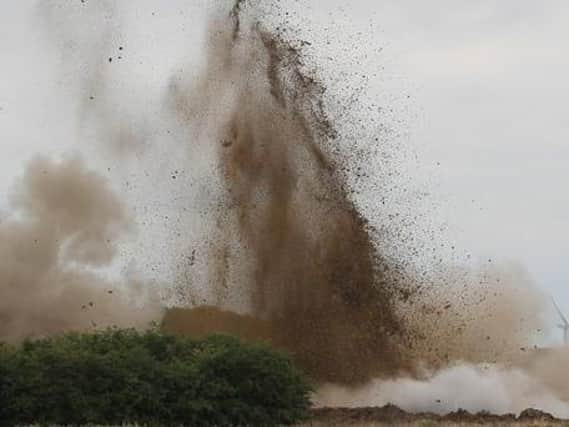Goole WW2 bomb: Could the 500lb explosive really have come from a crashed Lancaster aircraft?


Stricken crews did often try and eject their deadly cargo if they knew they were likely to ditch, to prevent them exploding on impact in a densely populated area.
Yet the story of a doomed Lancaster bomber doing so above Rawcliffe Road, where builders working on a Beal Homes development discovered the live ordnance on Thursday, is unverified and it is difficult to find evidence of such an incident.
Advertisement
Hide AdAdvertisement
Hide AdBeal's site manager John Sharpe told the BBC about the Lancaster theory, but did not clarify where the information had come from.
He added that his workers originally thought the 500lb bomb was a metal pipe.
Goole was surrounded by RAF airfields during World War Two, being close to the North Sea, and numerous bomber squadrons were based in East Yorkshire. Aircraft from different bases would meet up above the River Ouse over Goole to enter formations before flying to Europe.
In November 1940, a plane returning to RAF Lindholme, near Doncaster, from bombing a power station in Hamburg did crash land in Goole - but the aircraft was a Hampden, not a Lancaster. It came down on Dunhill Road, so would potentially have discharged any remaining explosives over open countryside first - the crew had run out of fuel so would have known they were in trouble. Yet it is more likely that the bomb chamber was empty after the night's raid in Germany. Three airmen died, but one survived.
Advertisement
Hide AdAdvertisement
Hide AdA more serious incident occurred in 1943, when 20 Halifax bombers from RAF Snaith and 15 Wellingtons from RAF Leconfield, near Driffield, were scheduled to meet above Goole. Yet two of the Wellingtons collided in mid-air above the town. One of the aircraft landed in a busy street, while another came down at Sandhall, across the Ouse. Ten crewmen died and there were three deaths on the ground. However, as the collision was so sudden and catastophic, it is less likely that either crew would have had time to dump their load.
Another explanation is that the bomb was German, and came from a Luftwaffe aircraft returning from a raid inland. These bombers would sometimes release any remaining explosives on random targets before they crossed the North Sea.
The MOD specialists who dealt with the detonation have not yet confirmed the bomb's type or origins.